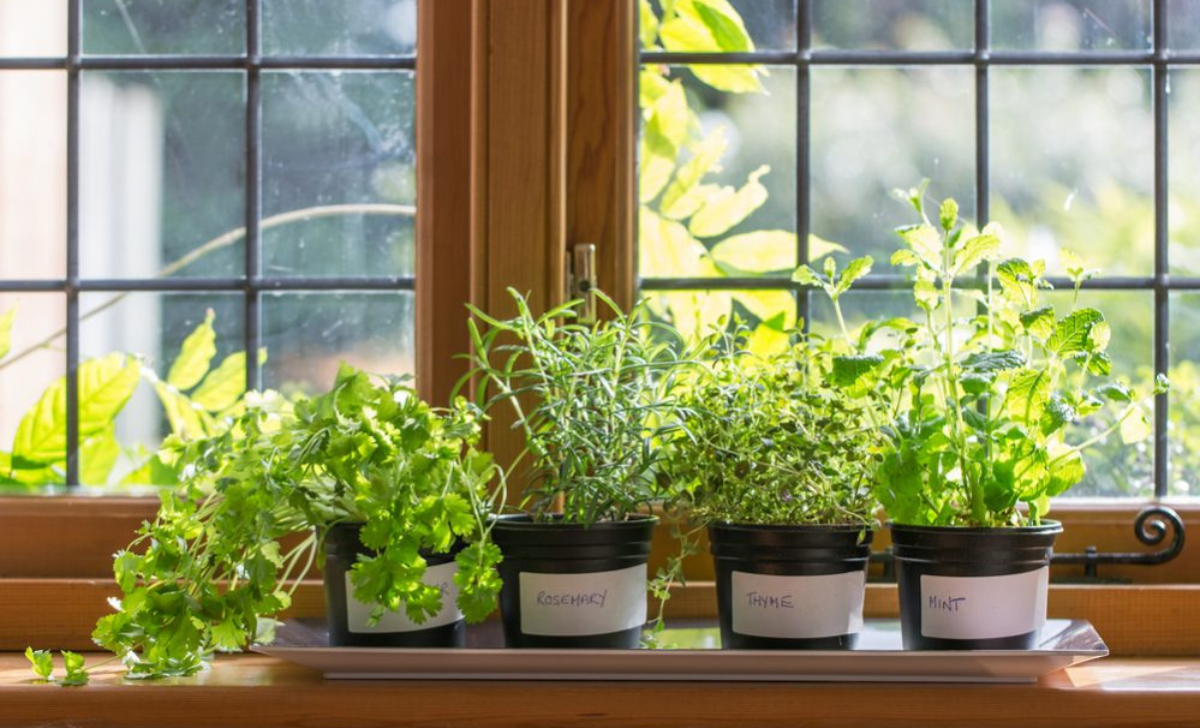Mushroom Cultivation: An Illustrated Guide to Growing Your Own Mushrooms at Home
$13.99
Over the past few years, the world has witnessed a remarkable surge in the popularity of both home cooking and gardening. As we spend more time in our kitchens, experimenting with new recipes and flavors, we also yearn to connect with nature. It’s in this confluence that indoor herbs have emerged as the bridge, elevating our culinary experiences and instilling newfound confidence in our gardening endeavors.
The Role of Indoor Herbs in Enhancing Culinary Creativity
Amidst the pandemic-induced lockdowns, people have turned to their kitchens for solace and exploration. Cooking has become a creative outlet, a source of comfort, and an avenue for discovering new skills. It’s in this pursuit of gastronomic excellence that indoor herbs play a pivotal role.
Imagine the convenience of plucking fresh cilantro for your homemade salsa, or the aroma of basil infusing your pesto with unmatched vibrancy. Herbs not only add depth and complexity to dishes but also elevate the overall dining experience. They are nature’s seasoning, ready to grace your plate at arm’s reach.
Savings and Sustainability: Growing Your Own Herbs
Aside from the gustatory pleasures, there’s a practical advantage to cultivating herbs indoors – cost-effectiveness. Pre-packaged herbs in plastic clamshells can be surprisingly expensive, especially when you consider the frequency with which they are used in cooking. By nurturing your own herb garden, you not only save money but also contribute to sustainability by reducing plastic waste.
Moreover, there’s a profound satisfaction in knowing precisely where your food comes from. When you grow herbs at home, you establish a direct connection with your ingredients, fostering a sense of mindfulness about the origins of your culinary creations.
Choosing the Right Herbs for Your Indoor Garden
The herb selection process should be a reflection of your culinary preferences. If you’re a fan of zesty salsas, cilantro is a must-have. For those who adore pesto, a thriving basil plant is indispensable. Tarragon adds elegance to chicken salad, while chives effortlessly elevate the humble baked potato. Fresh herbs can also invigorate salads and enhance homemade salad dressings with their vibrant flavors.
However, it’s advisable to start with a small selection of herbs to avoid feeling overwhelmed. Begin with the herbs that feature most prominently in your favorite dishes, and expand your collection as your confidence and expertise grow.
Indoor Herb Gardening: Tips for Success
Growing herbs indoors is an exciting journey, but it requires attention to detail. Most herbs can thrive indoors when placed correctly and well-maintained. However, some, like mint, dill, lemon balm, and fennel, are better suited for outdoor cultivation due to their robust growth patterns.
When starting your indoor herb garden, consider buying starts rather than sowing seeds. This approach ensures a more consistent and quicker harvest throughout the season. Place your pots in a bright window, preferably facing south, to provide ample sunlight. Rotate the pots a quarter turn when you notice the plants leaning toward the sun to encourage even growth.
The Importance of Proper Herb Potting and Watering

For successful indoor herb cultivation, adequate drainage is paramount. Lightweight potting soil is recommended as it promotes proper drainage, preventing waterlogged roots. It’s best to use packaged potting soil, as planting mix or topsoil can be too heavy for potted herbs.
When selecting pots, opt for 10-inch containers to allow ample space for root growth. However, the pot size can vary depending on the herb’s specific requirements. For instance, rosemary prefers more room, while short-lived annual herbs like cilantro and basil can tolerate smaller pots.
Watering your indoor herbs is an essential task. To determine when to water, insert your finger into the soil up to your second knuckle. If the soil feels dry at this depth, it’s time to water. Ensure that water flows through the soil and out of the pot’s bottom, preventing waterlogged roots. Feed your herbs with a water-soluble fertilizer every six months, using half the recommended ratio mentioned on the label.
Harvesting Herbs: Balancing Utility with Aesthetics
One of the joys of growing herbs is the ability to harvest them for culinary use. However, it’s essential to understand that harvested herbs may not always resemble perfectly groomed houseplants. As you snip off pieces for your recipes, your herb plants will undergo changes in appearance.
Embrace this transformation, for it’s a testament to the utility and flavor you’re infusing into your dishes. Each snip represents a step closer to culinary excellence, and the visual changes are a reminder of your gardening journey.
Herb-Infused Culinary Delights: Bringing Flavor to Your Table
In conclusion, indoor herb gardening is more than just a hobby; it’s a pathway to elevating your culinary adventures. The herbs you cultivate become partners in your kitchen, enhancing flavors, and infusing your dishes with freshness and vibrancy.
As you embark on this flavorful journey from pot to plate, remember that it’s not just about the destination but also the experience along the way. Indoor herb gardening provides a tangible link between the food you grow and the meals you savor, making each dish a testament to your culinary creativity and commitment to sustainability.
So, whether it’s the earthy aroma of basil in your pesto or the crisp bite of chives on your baked potato, let your indoor herb garden be the source of inspiration that brings flavor and life to your table.


